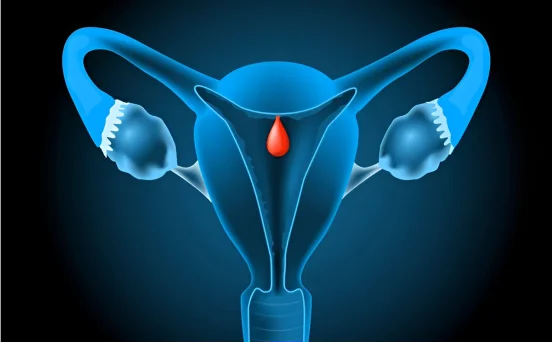Introduction
Coronary artery disease is one of the most common heart-related conditions affecting millions across the globe. When lifestyle changes and medications are not enough to restore blood flow to the heart, coronary surgery commonly known as Coronary Artery Bypass Grafting (CABG) becomes essential. But before surgery is even considered, the body shows certain warning signs that shouldn’t be ignored. Recognizing these symptoms early can mean the difference between a manageable condition and a life-threatening emergency.
Here will explore the symptoms of coronary surgery that usually lead to coronary surgery. We’ll look at how these symptoms manifest, why they shouldn’t be taken lightly, and how they guide doctors toward surgical intervention.
Symptoms of Coronary Surgery
- Chest Pain (Angina) :- One of the hallmark symptoms indicating coronary artery problems is chest pain, medically termed angina. This discomfort typically occurs when the heart muscle doesn’t get enough oxygen-rich blood. It often feels like pressure, tightness, or squeezing in the chest and may radiate to the shoulders, neck, or arms. Angina can be stable (occurs with activity and goes away with rest) or unstable (unexpected and more severe), which may indicate an increased risk for a heart attack and often prompts the need for surgical treatment.
- Shortness of Breath :- As the heart struggles to pump blood efficiently due to blocked coronary arteries, fluid can accumulate in the lungs, causing shortness of breath, especially during physical exertion or while lying flat. This symptom often occurs alongside fatigue and may worsen over time. It signals that the heart is not keeping up with the body’s demands, and such cases frequently lead cardiologists to consider coronary bypass surgery as a corrective measure.
- Fatigue and Weakness :- Another less obvious but equally significant symptom is chronic fatigue. When your heart isn’t pumping enough oxygenated blood, your muscles and brain receive less energy, leading to constant tiredness even after minimal physical activity. Patients often report that daily tasks such as climbing stairs or walking short distances become exhausting. This level of fatigue usually does not improve with rest and may indicate an underlying cardiac issue that requires further evaluation and possibly surgical treatment.
- Irregular Heartbeats (Arrhythmias) :- An irregular or rapid heartbeat can occur when the heart’s electrical system is affected by restricted blood flow. Arrhythmias may feel like fluttering in the chest or skipping beats and can be alarming to patients. Although not always painful, persistent arrhythmias can reduce the heart’s ability to pump effectively and increase the risk of complications like stroke or heart failure. When arrhythmias become frequent or are accompanied by other symptoms, they are often part of the criteria used to determine if coronary surgery is needed.
- Nausea and Sweating :- In some cases, especially in women and older adults, nausea, cold sweats, and lightheadedness may be the first signs of heart trouble. These symptoms are often confused with less serious conditions like indigestion or anxiety, which makes them particularly dangerous. If these symptoms appear suddenly and are accompanied by chest pain or shortness of breath, they can suggest an ongoing heart event that might eventually lead to surgery if arteries are found to be severely narrowed or blocked.
- Pain in Other Areas of the Body :- Heart-related symptoms are not always limited to the chest. Some patients report pain in the jaw, shoulder, back, or arms, especially on the left side. This referred pain is a result of nerve signals traveling from the heart to other parts of the body. When these symptoms are consistent or worsen with exertion, they may point to coronary artery disease and the need for surgical intervention.
- Swelling in the Legs and Ankles :- As coronary disease progresses, the heart’s pumping ability declines, leading to fluid retention, particularly in the lower limbs. Swelling in the ankles and feet may appear suddenly and can worsen throughout the day. Though often attributed to other conditions like kidney or liver issues, this symptom can also indicate heart failure due to poor coronary circulation and could warrant further cardiac evaluation, sometimes resulting in coronary surgery.
When to See a Doctor
Any of the above symptoms should prompt immediate medical evaluation, especially if they are persistent, worsening, or appearing in combination. Early diagnosis and intervention are essential to avoid heart attacks or severe heart damage. Cardiologists typically use ECG, stress tests, echocardiograms, and coronary angiography to determine the severity of the condition and whether surgery is required.
Conclusion
Coronary surgery is not a decision taken lightly. It is usually considered after patients present with persistent and serious symptoms that indicate significant blockage or damage in the coronary arteries. Recognizing the signs like chest pain, breathlessness, fatigue, and irregular heartbeat is vital for early diagnosis and timely treatment. If addressed early, many of these symptoms can be managed or even reversed, improving a patient’s quality of life and reducing the risk of sudden cardiac events.
Being proactive about heart health and understanding the symptoms can empower individuals to seek help before it’s too late. If you or a loved one is experiencing any of these warning signs, consult a healthcare provider promptly.























